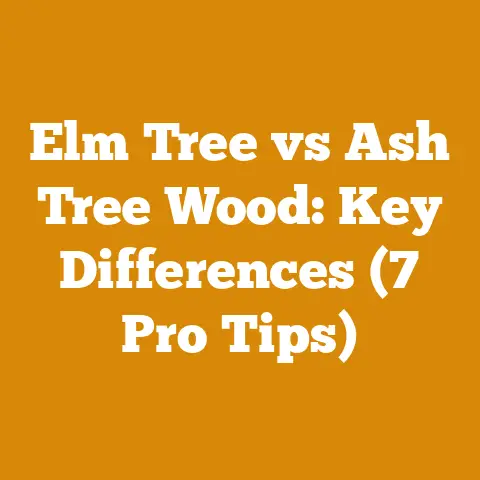Boric Acid Carpenter Bees: Protect Wood Steps (5 Pro Tips)
Are your wood steps looking more like a carpenter bee condominium than a welcoming entryway? And what does this have to do with Boric Acid? Well, you’re not alone! Many homeowners face the frustrating challenge of carpenter bees drilling unsightly holes in their wooden structures. But before you reach for any random insecticide, let’s dive into a targeted approach using boric acid, a proven and relatively safe method.
Boric Acid Carpenter Bees: Protect Wood Steps (5 Pro Tips)
Why Carpenter Bees Target Wood Steps
Carpenter bees, unlike honeybees, don’t eat wood. They excavate tunnels in it to create nests for their offspring. Softwoods like cedar, pine, and redwood are their favorites, but they’ll happily drill into any untreated wood. Wood steps, often exposed to the elements and potentially untreated, become prime targets. The holes are usually perfectly round and about ½ inch in diameter.
Understanding Boric Acid
Boric acid is a naturally occurring compound of boron, oxygen, and hydrogen. It’s a white powder that’s commonly used as an insecticide, fungicide, and herbicide. When carpenter bees ingest or come into contact with boric acid, it disrupts their digestive system and nervous system, eventually leading to their demise. It’s considered a less toxic alternative to many synthetic pesticides.
Why Measuring Project Success Matters in Wood Treatment
Before we jump into the tips, let’s talk about measuring success. Why bother tracking metrics when you’re just dealing with carpenter bees? Because effective treatment isn’t a one-and-done affair. Understanding the scope of the infestation, the effectiveness of your treatment, and the long-term protection you’re achieving requires careful monitoring. Think of it as preventative maintenance for your wooden steps.
Now, let’s get into those pro tips!
1. Identify the Extent of the Infestation
Before you even think about applying boric acid, you need to know how bad the problem is. This involves a thorough inspection of your wood steps.
- What to look for: Look for those telltale round holes, sawdust (bee frass) beneath the holes, and, of course, the bees themselves. Listen for buzzing inside the wood.
- Why it’s important: Knowing the extent of the infestation helps you determine how much boric acid you’ll need, where to apply it, and how often to reapply.
- How to interpret it: A few holes might indicate a recent infestation, while numerous holes and extensive sawdust suggest a more established colony.
- How it relates to other metrics: The number of holes directly correlates with the amount of boric acid needed and the time required for treatment.
My Experience: I once underestimated the severity of a carpenter bee infestation on my back porch. I saw a few holes and thought a quick spray of insecticide would do the trick. Weeks later, the buzzing continued. A closer inspection revealed a network of tunnels inside the wood. This taught me the importance of a thorough initial assessment.
Metric: Infestation Density
- Definition: The number of carpenter bee holes per square foot of wood surface.
- Why it’s important: Provides a quantifiable measure of the infestation’s severity.
- How to interpret it: A higher density indicates a more serious problem requiring more aggressive treatment.
- How it relates to other metrics: Directly influences the amount of boric acid needed and the treatment frequency.
Example: Let’s say you have a set of wooden steps that are 4 feet wide and 8 feet long. You count 20 carpenter bee holes.
- Total surface area: 4 ft * 8 ft = 32 sq ft
- Infestation density: 20 holes / 32 sq ft = 0.625 holes per sq ft
This gives you a baseline to track the effectiveness of your treatment.
2. Prepare Your Boric Acid Solution
Boric acid comes in powder form and needs to be mixed with water to create a solution that can be applied to the wood.
- The Recipe: A common recommendation is to mix about 1 tablespoon of boric acid per cup of warm water. Stir thoroughly until the powder is completely dissolved.
- Why it’s important: Proper mixing ensures the boric acid is evenly distributed and effective. Warm water helps the powder dissolve more easily.
- How to interpret it: A cloudy solution means the boric acid isn’t fully dissolved, and you need to stir more.
- How it relates to other metrics: The concentration of the solution affects the treatment’s effectiveness and the frequency of reapplication.
Metric: Solution Concentration
- Definition: The ratio of boric acid to water in the solution (e.g., 1 tablespoon per cup).
- Why it’s important: Determines the potency of the treatment.
- How to interpret it: A higher concentration may be more effective for severe infestations, but also potentially more harmful to beneficial insects (use with caution).
- How it relates to other metrics: Affects the kill rate of carpenter bees and the need for reapplication.
Example: If you mix 2 tablespoons of boric acid with 2 cups of water, your solution concentration is 1 tablespoon per cup (2/2 = 1).
Safety First: Always wear gloves and eye protection when handling boric acid. Avoid inhaling the powder. Keep the solution away from children and pets.
3. Application Techniques: Dusting and Injection
There are two primary ways to apply boric acid to wood steps infested with carpenter bees: dusting and injection.
- Dusting: This involves using a duster (like a bulb duster) to puff boric acid powder directly into the carpenter bee holes. The bees will track the powder throughout their tunnels, spreading it to other bees.
- Injection: This involves using a syringe or small applicator to inject the boric acid solution directly into the holes. This is particularly effective for treating established colonies.
- Why it’s important: Different application methods are suited for different situations. Dusting is good for initial treatment, while injection is better for targeting active nests.
- How to interpret it: If you see bees actively exiting the holes after dusting or injecting, it indicates the treatment is working.
- How it relates to other metrics: The chosen application method affects the coverage area and the amount of boric acid needed.
Metric: Coverage Area
- Definition: The percentage of infested area treated with boric acid.
- Why it’s important: Ensures that all affected areas are targeted.
- How to interpret it: A lower coverage area means some bees may escape treatment and continue to damage the wood.
- How it relates to other metrics: Affects the overall effectiveness of the treatment and the long-term protection of the wood steps.
Example: If you identify 10 carpenter bee holes and successfully treat 8 of them, your coverage area is 80% (8/10 * 100%).
My Experience: I found that a combination of dusting and injection worked best for me. I would dust the holes first to get a wide distribution of the boric acid, then inject the solution into the most active holes to target the nests directly.
4. Seal the Holes (After Treatment)
Once you’ve treated the carpenter bee holes, it’s important to seal them. This prevents future infestations and protects the wood from further damage.
- What to Use: Wood filler, caulk, or even small wooden dowels can be used to seal the holes.
- Why it’s important: Sealing the holes eliminates nesting sites and discourages carpenter bees from returning.
- How to interpret it: A properly sealed hole is flush with the surrounding wood and prevents water from entering.
- How it relates to other metrics: Sealing the holes contributes to the long-term protection of the wood steps and reduces the need for future treatments.
Metric: Hole Sealing Rate
- Definition: The percentage of treated carpenter bee holes that are successfully sealed.
- Why it’s important: Prevents re-infestation and protects the wood from water damage.
- How to interpret it: A lower sealing rate means the steps are still vulnerable to future carpenter bee activity.
- How it relates to other metrics: Directly impacts the longevity of the treatment and the overall health of the wood.
Example: If you treat and seal 9 out of 10 carpenter bee holes, your hole sealing rate is 90%.
Important Note: Make sure the carpenter bees are dead or have left the nest before sealing the holes. Sealing them in could trap them and potentially lead to them chewing new escape routes.
5. Preventative Measures: Wood Protection
The best way to deal with carpenter bees is to prevent them from infesting your wood steps in the first place.
- Wood Preservatives: Apply a wood preservative or sealant to your steps. This will make the wood less attractive to carpenter bees.
- Paint or Stain: Painting or staining the wood can also deter carpenter bees. They prefer bare, untreated wood.
- Regular Inspections: Regularly inspect your wood steps for signs of carpenter bee activity. Early detection can prevent a major infestation.
- Why it’s important: Preventative measures provide long-term protection and reduce the need for repeated treatments.
- How to interpret it: A well-protected wood surface will be less susceptible to carpenter bee damage.
- How it relates to other metrics: Preventative measures can significantly reduce the infestation density and the need for boric acid treatment.
Metric: Wood Protection Level
- Definition: A subjective assessment of the level of protection applied to the wood (e.g., untreated, treated with preservative, painted/stained).
- Why it’s important: Provides a general indication of the wood’s vulnerability to carpenter bees.
- How to interpret it: Higher protection levels (e.g., painted/stained) typically result in lower infestation rates.
- How it relates to other metrics: Influences the long-term maintenance requirements and the need for future treatments.
Example: You could categorize wood protection levels as:
- Untreated: 0
- Treated with preservative: 1
- Painted/Stained: 2
Track these levels over time to see how they correlate with carpenter bee activity.
My Story: After dealing with carpenter bees for several years, I finally decided to invest in a high-quality wood preservative. I applied it to all my exposed wooden structures, including my steps, porch, and deck. Since then, I’ve seen a significant decrease in carpenter bee activity. It was a worthwhile investment in the long-term health of my property.
Project Tracking and Key Performance Indicators (KPIs)
Now that we’ve covered the pro tips, let’s delve deeper into how to track your project and measure its success using Key Performance Indicators (KPIs). Remember, effective wood treatment is not just about applying boric acid; it’s about understanding the problem, monitoring the results, and implementing preventative measures.
Here’s a breakdown of KPIs relevant to treating carpenter bees on wood steps:
1. Initial Infestation Assessment Score (IIAS)
- Definition: A composite score based on the initial infestation density, the size of the affected area, and the apparent age of the infestation.
- Why it’s important: Provides a baseline measure of the problem’s severity.
- How to interpret it: A higher IIAS indicates a more challenging project.
- How it relates to other metrics: Used to track progress and measure the effectiveness of the treatment plan.
How to Calculate:
- Infestation Density Score (IDS): (Number of Holes / Total Area) * 10
- Affected Area Score (AAS): (Affected Area / Total Step Area) * 10
- Infestation Age Score (IAS): (Estimated Age in Months) * 2 (capped at 10)
IIAS = IDS + AAS + IAS
Example:
- Number of Holes: 15
- Total Area: 24 sq ft
- Affected Area: 12 sq ft
- Estimated Age: 3 Months
Calculations:
- IDS = (15 / 24) * 10 = 6.25
- AAS = (12 / 24) * 10 = 5
- IAS = 3 * 2 = 6
IIAS = 6.25 + 5 + 6 = 17.25
2. Treatment Application Time (TAT)
- Definition: The total time spent applying boric acid to the wood steps, including preparation, dusting, and injection.
- Why it’s important: Helps you estimate the labor cost and schedule future treatments.
- How to interpret it: A longer TAT may indicate a more complex infestation or inefficient application techniques.
- How it relates to other metrics: Can be compared to the Infestation Density Score to assess the efficiency of the treatment.
Example: If you spend 2 hours preparing and applying boric acid to your wood steps, your TAT is 2 hours.
3. Material Cost per Hole (MCPH)
- Definition: The total cost of boric acid and sealing materials divided by the number of treated carpenter bee holes.
- Why it’s important: Helps you track the cost-effectiveness of the treatment.
- How to interpret it: A higher MCPH may indicate you’re using too much material or that the infestation is more widespread than initially thought.
- How it relates to other metrics: Can be used to compare the cost-effectiveness of different treatment methods.
Example:
- Cost of Boric Acid: $10
- Cost of Wood Filler: $5
- Total Cost: $15
- Number of Holes Treated: 10
MCPH = $15 / 10 = $1.50 per hole
4. Hole Re-Infestation Rate (HRR)
- Definition: The percentage of treated and sealed carpenter bee holes that are re-infested within a specific timeframe (e.g., 6 months, 1 year).
- Why it’s important: Indicates the long-term effectiveness of the treatment and preventative measures.
- How to interpret it: A higher HRR suggests the need for more aggressive treatment or better preventative measures.
- How it relates to other metrics: Directly impacts the longevity of the treatment and the overall health of the wood.
Example: If you treat and seal 20 carpenter bee holes, and 2 of them are re-infested within a year, your HRR is 10% (2/20 * 100%).
5. Customer Satisfaction Score (CSS) (If Applicable)
- Definition: A measure of customer satisfaction with the carpenter bee treatment service (if you’re a professional). This could be based on a survey or direct feedback.
- Why it’s important: Provides valuable insights into the quality of your service and areas for improvement.
- How to interpret it: A lower CSS may indicate issues with the treatment effectiveness, communication, or customer service.
- How it relates to other metrics: Can be correlated with other KPIs (e.g., HRR, TAT) to identify factors that contribute to customer satisfaction.
Example: You send out a survey to your clients after completing a carpenter bee treatment. They rate their satisfaction on a scale of 1 to 5, with 5 being the highest. You average the scores from all your clients to get your CSS.
Data Collection and Analysis
To effectively track these KPIs, you need a system for collecting and analyzing data. Here are a few options:
- Spreadsheet: A simple spreadsheet (like Excel or Google Sheets) can be used to track the number of holes, treatment dates, material costs, and re-infestation rates.
- Project Management Software: More sophisticated project management software can help you track tasks, timelines, and costs.
- Dedicated Pest Control Software: If you’re a professional pest control operator, consider using dedicated software designed for tracking infestations, treatments, and customer data.
Data Analysis:
Once you’ve collected the data, analyze it to identify trends and areas for improvement. For example:
- Are certain areas of your wood steps more prone to re-infestation?
- Is a particular treatment method more effective than others?
- Are your material costs too high?
- Are your customers satisfied with your service?
Use these insights to refine your treatment plan, improve your efficiency, and provide better service.
Limited resources, tight budgets, and a lack of specialized equipment can make it difficult to implement effective treatment strategies.
Here are a few tips for overcoming these challenges:
- Prioritize Prevention: Focus on preventative measures, such as using pressure-treated wood or applying wood preservatives, to minimize the risk of infestations.
- Source Affordable Materials: Look for affordable sources of boric acid and other treatment materials. Consider buying in bulk to save money.
- DIY Solutions: Explore DIY solutions for applying boric acid, such as using a homemade duster or syringe.
- Community Collaboration: Collaborate with other small-scale loggers and firewood suppliers to share knowledge and resources.
- Government Assistance: Investigate potential government grants or programs that offer financial assistance for pest control and wood preservation.
Applying Metrics to Improve Future Projects
The real value of tracking these metrics lies in using them to improve future wood processing or firewood preparation projects. Here’s how:
- Identify Best Practices: By tracking the effectiveness of different treatment methods, you can identify the best practices for controlling carpenter bees in your specific area.
- Optimize Resource Allocation: By tracking material costs and treatment times, you can optimize your resource allocation and reduce expenses.
- Enhance Customer Satisfaction: By tracking customer satisfaction scores, you can identify areas where you can improve your service and build stronger relationships with your clients.
- Minimize Environmental Impact: By using targeted treatments and preventative measures, you can minimize the environmental impact of your pest control efforts.
Remember, carpenter bee control is an ongoing process. By consistently tracking your progress and using data to inform your decisions, you can protect your wood steps and ensure the long-term health of your property.
Conclusion: Protecting Your Wood Steps with Knowledge and Boric Acid
Carpenter bees might seem like a minor nuisance, but their persistent drilling can cause significant damage to your wood steps over time. By understanding their behavior, using boric acid strategically, and tracking key metrics, you can effectively protect your property and prevent future infestations. Remember to prioritize prevention, monitor your progress, and adapt your approach as needed. With a little knowledge and effort, you can keep those buzzing pests at bay and enjoy your wood steps for years to come.






